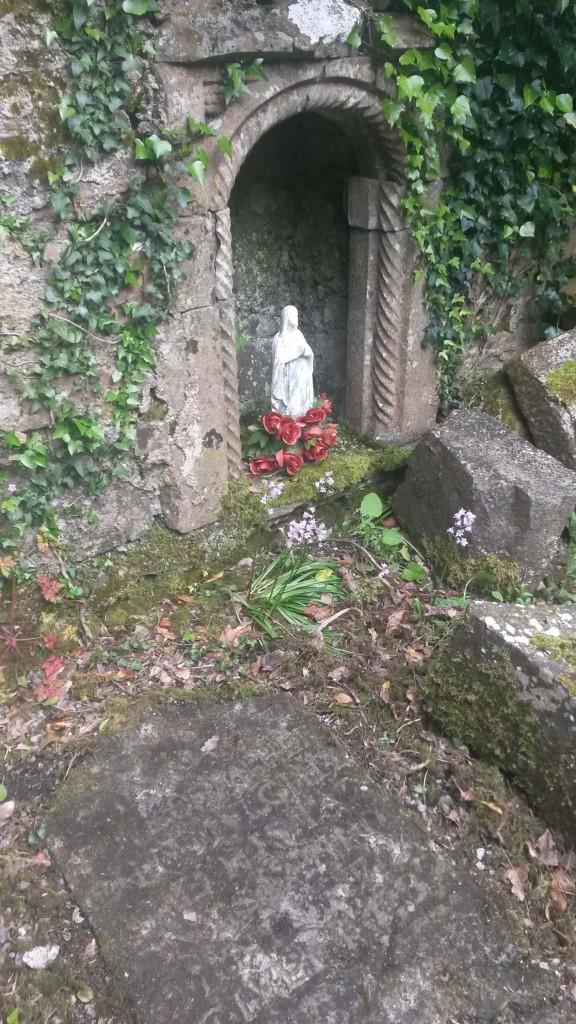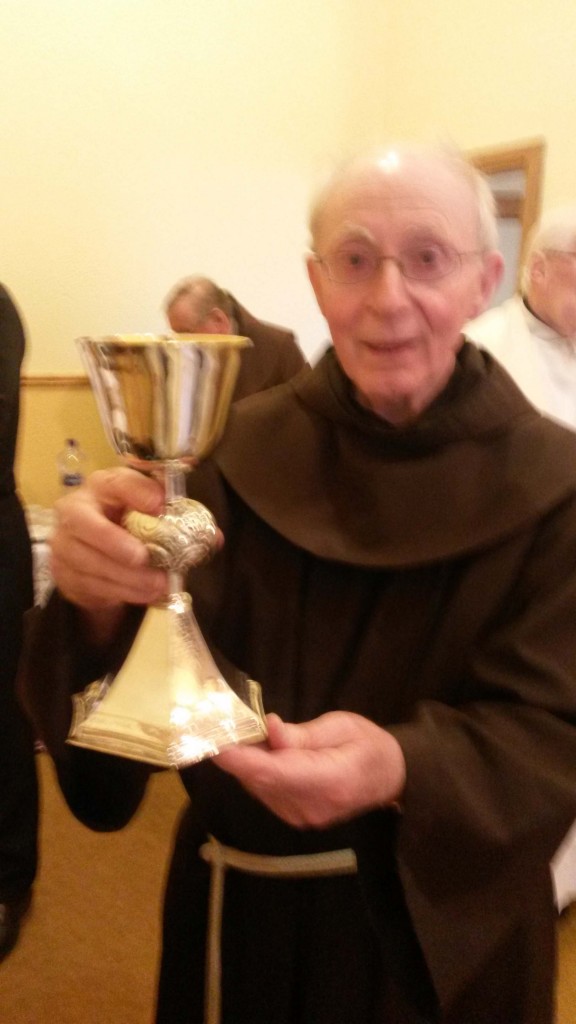© Donal G. Burke 2015
One of the earliest references to individuals of the name Mulgehy in County Galway dates from the late sixteenth century, with the inclusion of Donnagh oge (ie. óg or ‘the younger’) O Molgeyhe and Teig og O Mulgehy among the many of the county issued a pardon by the Crown in May of 1583. Three years later, in 1586, one Edmond ballo O Molgei mcTeig ley and Oen O Mulgey mcRorie oge, the latter given as ‘of Carromgog’, received a pardon from the Crown alongside numerous others from about O’Madden’s territory of Síl Anmchadha.[i]
The name was rare in east Galway but individuals of the name were established in the parish of Abbeygormacan by the early years of the seventeenth century. Owen O Mulgahye of the Castletown, husbandman and Tirlagh O Mulgehye of Castletown, yeoman, were among the many persons issued a general pardon by the Crown in 1603 in the first year of the reign of King James I. In 1617 Tirlagh O Mulgihy was found to be seised of fee of a cartron in Carowmagoige.[ii] While Carowmagoige is clearly that Carromgog recorded in 1586, the denomination does not occur in that particular form in the Books of Survey and Distribution in County Galway in the mid seventeenth century. It evidently lay in or about the townland of Castletown, given the occurence of family members there in the early 1600s and their scarcity elsewhere in the territory or wider county. Carowmagoige was, in all likelihood, the townland in Abbeygormacan parish known as ‘Cormick’, adjacent to Castletown. The name of this denomination in the Irish language was ‘Ceathrú mhic Dhúg’ and as such is phonetically similar to ‘Carowmagoige’ or ‘Carromgog.’ The denomination of Castletown lay on the border of the O Madden’s territory of Síl Anmchadha with that of the Earl of Clanricarde’s territory of Clanricarde and the principal local landholder about the townland of Castletown in the late sixteenth and early seventeenth century was the head of the O Hannin family. Nicholas O Hannin, a contemporary of Tirlagh O Mulgihy, held extensive property in Abbeygormacan in 1617 including the castle of Castleheiny and also held a cartron of land in Carowmagoige. The remaining half quarter of Carowmagoige was held in that year by the wealthy Galway merchant Richard Blake, who acquired lands about Abbeygormacan by the early years of the seventeenth century.
From the description of Owen and Tirlagh as husbandman and yeoman respectively, they would appear to have been of a middle rank and the former was in all likelihood the same individual as Owen O Mulgeihy of Moynster O Gormoken (ie. Abbeygormacan) mentioned in the Calendar of Patent Rolls in May of 1603.[iii]
The name did not occur among the landed proprietors of County Galway in 1641 and individuals of the family would appear to have rented their holdings from others. Neither did anyone of the name occur among those transplanted by the Cromwellian authorities in the mid seventeenth century.
Records relating to members of the family in east Galway are sparse. However, the continued presence of individuals of the name in the region into the mid to late seventeenth century may be attested by the grave-slab located in the ruinous side chapel of the former Augustinian monastery of St. Mary’s at Abbeygormacan, bearing the inscription ‘Pray for the soul of Father John Mulgihy and his parents Anno Domini the 24 of Juli 1684.’
The overgrown interior of the side chapel at Abbeygormacan, with the seventeenth century wall tomb of the Hannins in the background and the grave-slab commemorating Father John Mulgihy and his parents in the foreground.
Another of the name, one Fr. Paul Mulgeehy or Paul O Mulgaoihe, provided the Franciscan friary at Meelick, to the east of Abbeygormacan, on the banks of the River Shannon in County Galway, with a silver chalice in the mid seventeenth century. The hexagonal base of the chalice was inscribed with the words; ‘Fr: P: Paulus: O: Mulgaoihe procuravit hunc calicem pro con: de Myllicke p quo oretur año 1640.’[iv] It is uncertain, however, if there was any connection between the donor and the family at Abbeygormacan.
Fr. McMahon OFM in the sacristy of Meelick Church in July of 2014, with the chalice known by some as ‘the Meelick Chalice,’ at a mass commemorating the six hundredth anniversary of the church. The chalice is more correctly the ‘Paul Mulgeehy’ or ‘Paul O Mulgaoihe’ chalice, named after the donor ‘Fr. P. Paul O Mulgaoihe’ who procured the chalice for the Meelick friary in 1640. The chalice was in the care of the Franciscan friary in Drogheda in the early twentieth century and is now held in the National Museum of Ireland in Dublin.
No person of the name Mulgehy was given as an occupier of land in County Galway in Sir Richard Griffith’s Primary Valuation of Tenements of the mid 1850s.
[i] PROI, Dublin, Reports of the Deputy Keeper of the Public Records in Ireland, 1883, 15/3, Appendix I, Cal. Fiants Eliz. I, p. 204, no. 4140; p.158, No. 4887 (4071).
[ii] Cal. Pat. Rolls, 1 James I, p. 28. Dated September, 1st year of James I; RIA, Dublin, OS EI/33/51 Reportery of Inquisitions from the Chancery Office, Dublin, Co. Galway, Vol. III.




